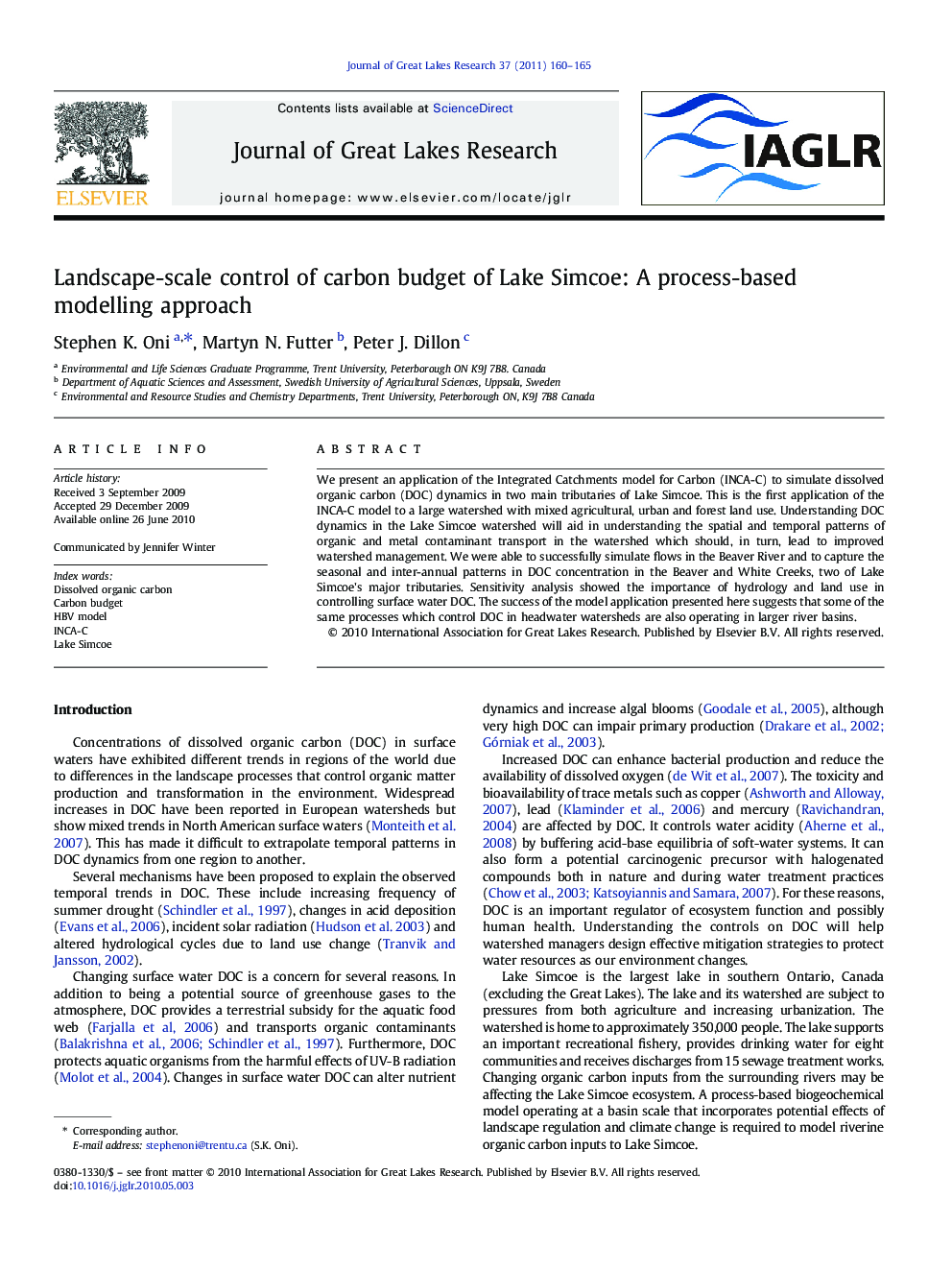| Article ID | Journal | Published Year | Pages | File Type |
|---|---|---|---|---|
| 4398959 | Journal of Great Lakes Research | 2011 | 6 Pages |
Abstract
We present an application of the Integrated Catchments model for Carbon (INCA-C) to simulate dissolved organic carbon (DOC) dynamics in two main tributaries of Lake Simcoe. This is the first application of the INCA-C model to a large watershed with mixed agricultural, urban and forest land use. Understanding DOC dynamics in the Lake Simcoe watershed will aid in understanding the spatial and temporal patterns of organic and metal contaminant transport in the watershed which should, in turn, lead to improved watershed management. We were able to successfully simulate flows in the Beaver River and to capture the seasonal and inter-annual patterns in DOC concentration in the Beaver and White Creeks, two of Lake Simcoe's major tributaries. Sensitivity analysis showed the importance of hydrology and land use in controlling surface water DOC. The success of the model application presented here suggests that some of the same processes which control DOC in headwater watersheds are also operating in larger river basins.
Related Topics
Physical Sciences and Engineering
Earth and Planetary Sciences
Earth and Planetary Sciences (General)
Authors
Stephen K. Oni, Martyn N. Futter, Peter J. Dillon,
